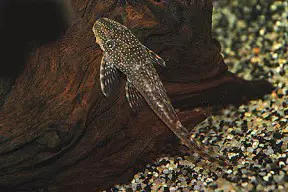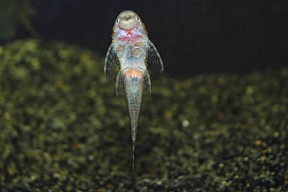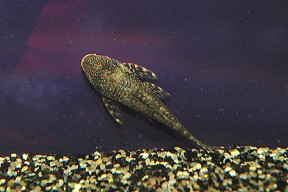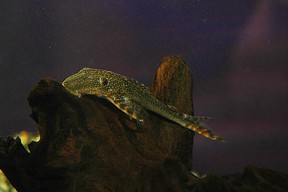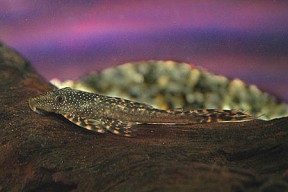Lasiancistrus tentaculatus
L092, L194
Classification
Loricariidae, Subfamily: Hypostominae
Distribution
Colombia and Venezuela.
Habitat
It’s a riverine species typically inhabiting driftwood snags.
Maximum Standard Length
4.8″ (12cm).
Aquarium SizeTop ↑
30″ x 12″ x 12″ (75cm x 30cm x 30cm) – 67.5 litres.
Maintenance
A biotope setup is easily achieved by simply filling the tank with loads of driftwood of different shapes and sizes. Arrange these randomly and then add a thick layer of sand as substrate. Aquatic plants are not a feature of its natural waters, and would most likely be eaten anyway. Some surface vegetation is not a bad idea, however, as it prefers dim lighting. It also needs well-oxygenated water, ideally with a good amount of movement and flow.
Water Conditions
Temperature: 75-82°F (24-28°C)
pH: 6.0-7.4
Hardness: 2-10°H
Diet
This is the only Lasiancistrus species that is primarily xylophagus (wood-eating) and it will not do well without access to wood as a food source. In scientific studies, the intestines of similar species have found to be completely filled with wood chips and the fish have specialised bacteria in the gut that aid in the digestion of it. It also enjoys munching on greenery such as cucumber, courgette, blanched spinach etc. and will accept sinking dried foods.
Behaviour and CompatibilityTop ↑
An ideal choice for the South American community tank, as it’s very placid. You can keep it with tankmates such as characins, peaceful cichlids, Corydoras and other Loricariids. It’s not particularly territorial and you can keep a group in most sizes of tank.
Sexual Dimorphism
Best sexed by looking at the fish from above, as adult females are noticeably broader when full of eggs. It’s the only species in the genus in which mature males develop a few Ancistrus-like tentacles around the mouth, although not to anything like the extent seen in Ancistrus.
Reproduction
Has been spawned in the hobby, but unfortunately little detailed information is available. The eggs are laid in a cave or crevice and hatch in around 5 days. The fry need access to both wood and greenstuffs for the best growth.
NotesTop ↑
This lovely little species was only described in 2005 and the same study also reclassified most of the species previously assigned to Laciancistrus. Many were found to be of different genera or representatives of the same species. Laciancistrus can be easily distinguished from Ancistrus (and indeed all other Loricariids) by the presence of whiskerlike odontotes growing among the cheek odontotes. These are very thin and clearly visible, and are indeed reminiscent of mammalian hairs.
This particular species‘ tendency to eat wood is shared with members of the genera Panaque and Hypostomus (H. cochliodon group). These different groups are known to have evolved convergently (independently) of one another. It’s thought that the xylophagus behaviour of the fish has developed as they inhabit areas where fallen wood litters much of the substrate. Not much light penetrates the water to initiate algal growth, giving fish with the ability to use wood as a food source a competitive advantage. It’s certainly an impressive specialisation, as these Loricariids are the only species of xylophagus fish known.
When buying, check the fish has a rounded belly and that its eyes aren’t sunken, as these are classic signs of emaciation in newly imported specimens.

